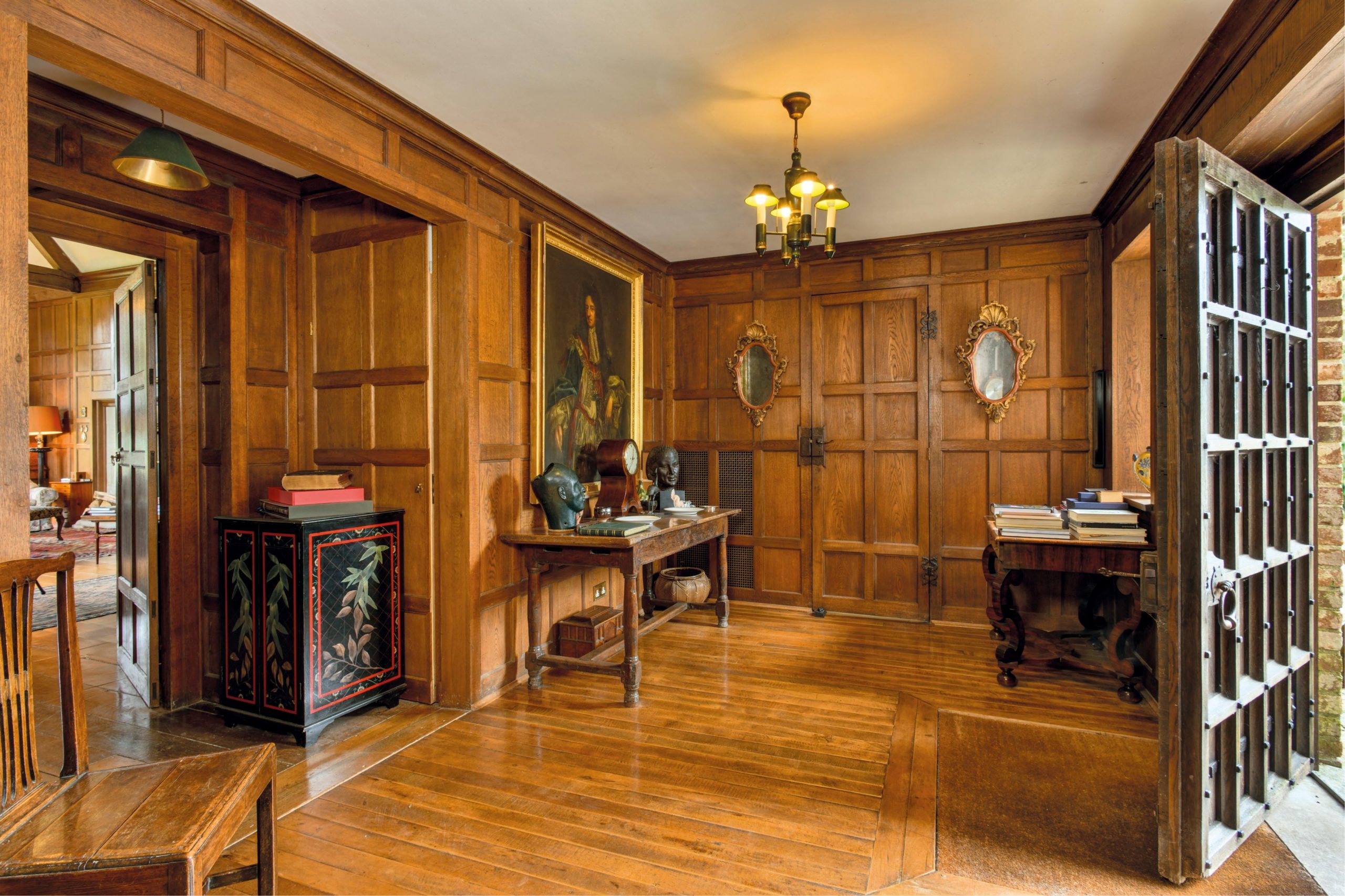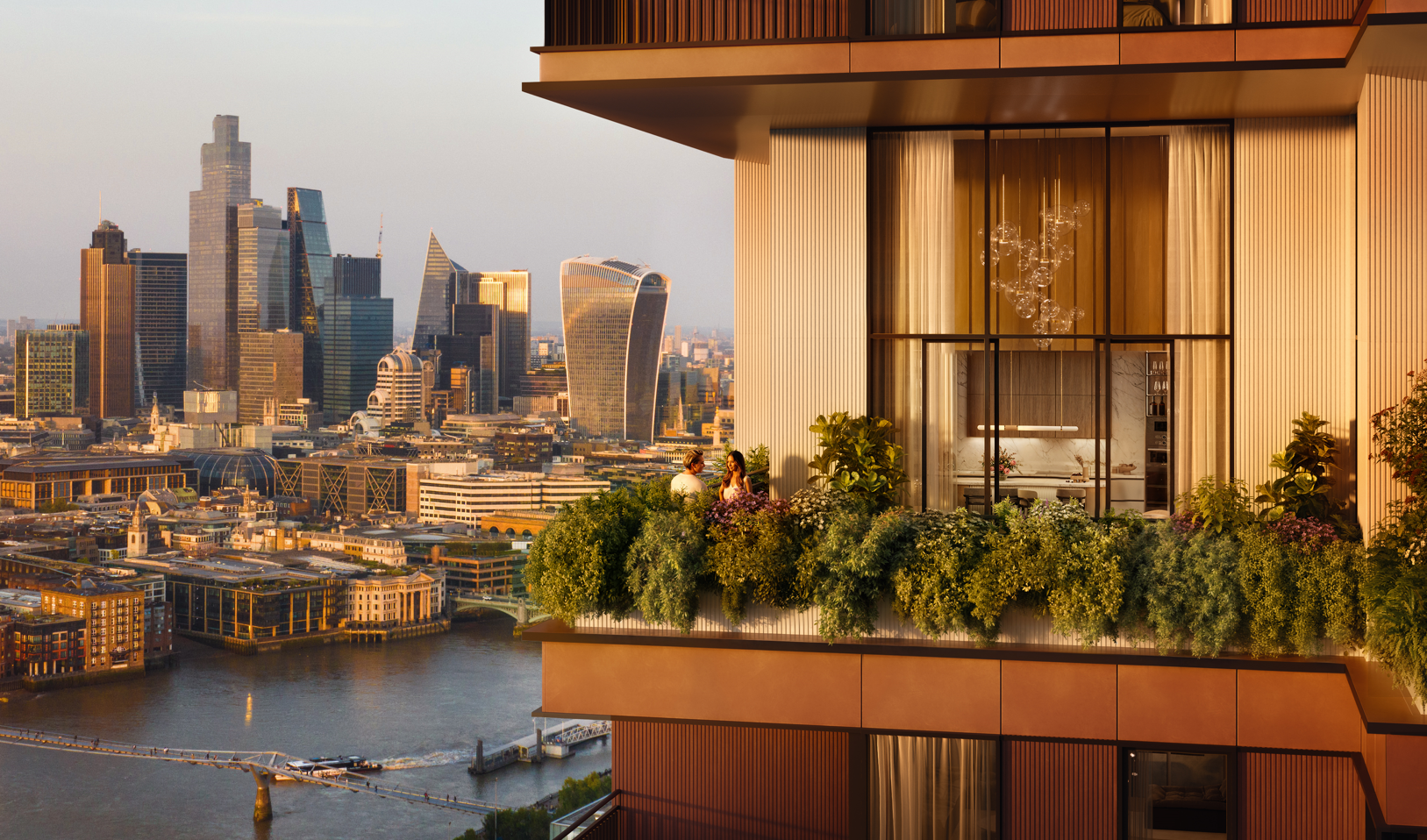One of Britain's finest country estates, once bought by British history's most famous diamond smuggler, for sale at £18.5 million
Thomas Pitt's ill-gotten gains earned him the money to found a political dynasty, as well as buying a series of country estates. One of them is now for sale.


Five thousand years of history lie beneath the gently rolling landscape of the picturesque, 970-acre West Woodyates Manor estate, which sits in peaceful seclusion within the Cranborne Chase AONB, two miles north-east of the east Dorset village of Sixpenny Handley and 11 miles south of the cathedral city of Salisbury, Wiltshire.
The sale of the impressively diverse residential, farming, sporting and conservation estate for the first time since 1929, at a guide price of ‘excess £18.5 million’ through Knight Frank, is ‘a rich and rare event’ in this timeless part of Dorset, says selling agent Clive Hopkins.
Although the country around West Woodyates has been occupied and farmed since Neolithic times, earlier Mesolithic flint implements, from scrapers to axe-heads and laurel-leaf knives, have been found on the farm. The discovery of coins from the reign of Constantine I (272–337ad) and the ancient well in the Well House, thought to be of Roman origin, suggest that West Woodyates was well established as a farming settlement in Roman times.

In the Middle Ages, the land formed part of the estates of Tarrant Abbey, founded as an independent monastery in 1186. It was refounded in the early 1200s as a Cistercian nunnery that became one of the richest in England. Its links with West Woodyates are commemorated by an area of the estate known as Tarrant’s Hill and a number of mounds and depressions in the lower park point to the remains of an abandoned medieval village, possibly from the time of the Black Death in the mid 1300s.
At the heart of the estate stands West Woodyates Manor, listed Grade II*, the core of which dates from the 17th century or earlier. Historically, the position of the house in a hollow of the landscape, with its front to the open farmland and its back to the oak forests of Cranborne Chase, ensured access to food, fuel and water, together with good communications and excellent security. It still does.
According to its Historic England listing, the manor was remodelled in the early 18th century by Thomas Pitt, 1st Lord Londonderry. He was the second son of Thomas ‘Diamond’ Pitt, the enterprising son of the Rev John Pitt, rector of Blandford St Mary, who went off to India, where he ran rings around the powerful East India Company before returning to England to found a Parliamentary dynasty.
He famously bought a number of West Country estates, including West Woodyates, with the proceeds of the sale of a huge uncut diamond acquired in India for £20,400 in 1701 and smuggled back to England. It took two years to cut and even longer to sell, but in 1717, the magnificent finished stone, known as Le Régent, was sold to Philippe, Duke of Orléans, for £135,000. The profit, expressed in 2020 prices and taking into account the smaller diamonds also cut from the original stone, was in the tens of millions.
Sign up for the Country Life Newsletter
Exquisite houses, the beauty of Nature, and how to get the most from your life, straight to your inbox.

West Woodyates remained in the Pitt family for most of the 18th century, during which time the striking Queen Anne front was added and the formal gardens laid out. These include two important 18th-century garden elements, scheduled as Ancient Monuments by English Heritage. These are the ha-ha, built to separate the park and its livestock from the garden without spoiling the view from the house, and several bastions or ‘prospect mounds’ that provide viewpoints from which the house, garden and estate can be seen to best effect.
Early-20th-century additions include a long brick range of racing stables (now barns) built by the Hayter family and the vaulted drawing room added by the Eastwood family. Today, West Woodyates Manor provides 10,630sq ft of manageable living space, including, on the ground floor, four fine reception rooms running along the main façade and a delightful family kitchen. The first floor houses a charming master suite with spectacular views over the estate, four main bedrooms and three bathrooms, with further bedrooms and a bathroom on the first and second floors.
An underground tunnel linking the manor house with the pretty, four-bedroom Manor Cottage was added in the 1930s — reputedly to conceal the sight of servants moving between the buildings from visiting gentry. Nowadays a substantial portfolio of let cottages generates a useful income stream.

Farming is still the lifeblood of the estate, with some 750 acres under cultivation and 37 acres of permanent pasture. Cropping is based on a three-course rotation of winter wheat, spring barley and oilseed rape, together with beans and other break crops. The business is run as a family partnership, with fieldwork carried out by a contractor using the best modern growing techniques and technology.
Sporting and wildlife conservation are close to the hearts of the current owners of West Woodyates estate, where an abundance of deer and partridge provide the basis of an enjoyable wild-game shoot. Beetle banks have been installed in the larger arable fields to provide cover for ground-nesting birds. Wildflower headlands have been established as part of a mid-tier Countryside Stewardship Scheme and previously cultivated land allowed to revert to rough grassland or downland to create areas rich in wild flowers.
In addition, some 65 acres of former arable land have been planted alongside Denbose Wood, a 30-acre block of ancient woodland designated a Site of Nature Conservation Interest. Numerous species of orchids can also be found on the estate, as well as 50 breeding species of birds and 30 species of butterflies, including the magnificent but elusive purple emperor.
West Woodyates Manor is for sale at £18.5 million via Knight Frank.

Credit: Strutt and Parker
Best country houses for sale this week
An irresistible West Country cottage and a magnificent Cumbrian country house make our pick of the finest country houses for
-
 A rare opportunity to own a family home on Vanbrugh Terrace, one of London's finest streets
A rare opportunity to own a family home on Vanbrugh Terrace, one of London's finest streetsThis six-bedroom Victorian home sits right on the start line of the London Marathon, with easy access to Blackheath and Greenwich Park.
By James Fisher Published
-
 Materials, textures, construction, expression: A Brutalist watch on your wrist
Materials, textures, construction, expression: A Brutalist watch on your wristLuxury watchmakers are seeking to bridge the gap between two contrasting styles, with exciting results.
By Chris Hall Published
-
 A rare opportunity to own a family home on Vanbrugh Terrace, one of London's finest streets
A rare opportunity to own a family home on Vanbrugh Terrace, one of London's finest streetsThis six-bedroom Victorian home sits right on the start line of the London Marathon, with easy access to Blackheath and Greenwich Park.
By James Fisher Published
-
 A day walking up and down the UK's most expensive street
A day walking up and down the UK's most expensive streetWinnington Road in Hampstead has an average house price of £11.9 million. But what's it really like? Lotte Brundle went to find out.
By Lotte Brundle Last updated
-
 Damon Hill's former home in Marbella is the perfect place to slow down
Damon Hill's former home in Marbella is the perfect place to slow downThe glorious Andalusian-style villa is found within the Lomas de Marbella Club and just a short walk from the beach.
By James Fisher Published
-
 A 327-acre estate in the heart of 'England’s Côte d’Or', with a 26,000sq ft Georgian style home at its heart
A 327-acre estate in the heart of 'England’s Côte d’Or', with a 26,000sq ft Georgian style home at its heartStokes Hall in the Crouch Valley is an inspiring property looking for a new owner.
By Penny Churchill Published
-
 Schreiber House, 'the most significant London townhouse of the second half of the 20th century', is up for sale
Schreiber House, 'the most significant London townhouse of the second half of the 20th century', is up for saleThe five-bedroom Modernist masterpiece sits on the edge of Hampstead Heath.
By Lotte Brundle Published
-
 Is the 'race for space' officially over?
Is the 'race for space' officially over?During the lockdowns, many thought the countryside was the place to be. It seems many are now changing their minds.
By Annabel Dixon Last updated
-
 What's a 'wellness village' and will it tempt you back into the office?
What's a 'wellness village' and will it tempt you back into the office?The team behind London's first mixed-use ‘wellness village’ says it has the magic formula for tempting workers back into offices.
By Annunciata Elwes Published
-
 A mini estate in Kent that's so lovely it once featured in Simon Schama's 'History of Britain'
A mini estate in Kent that's so lovely it once featured in Simon Schama's 'History of Britain'The Paper Mill estate is a picture-postcard in the Garden of England.
By Penny Churchill Published
